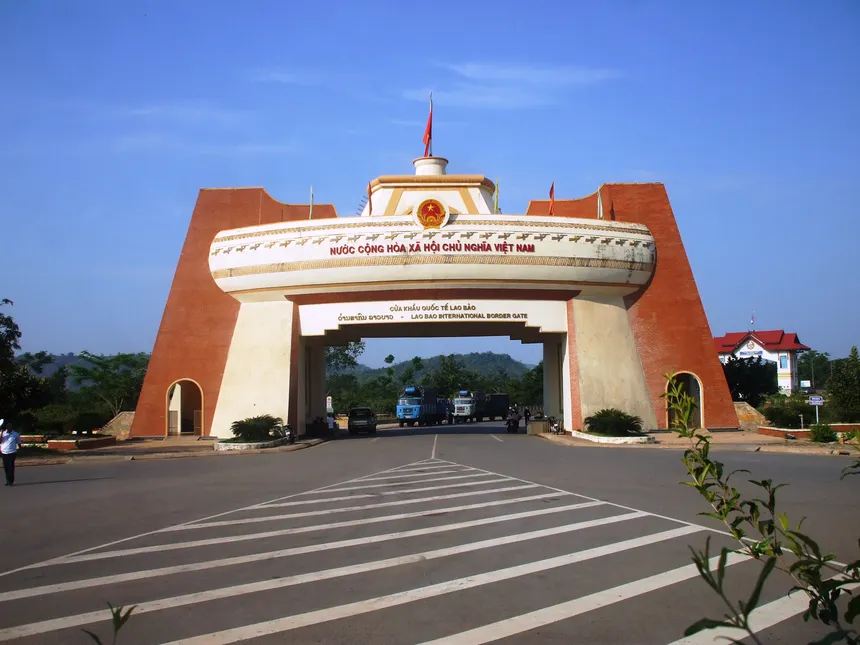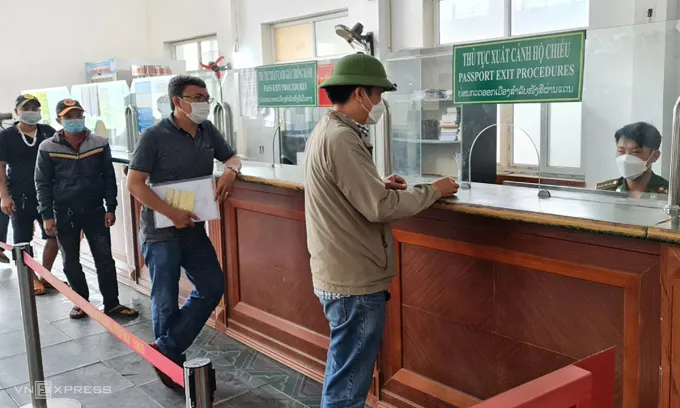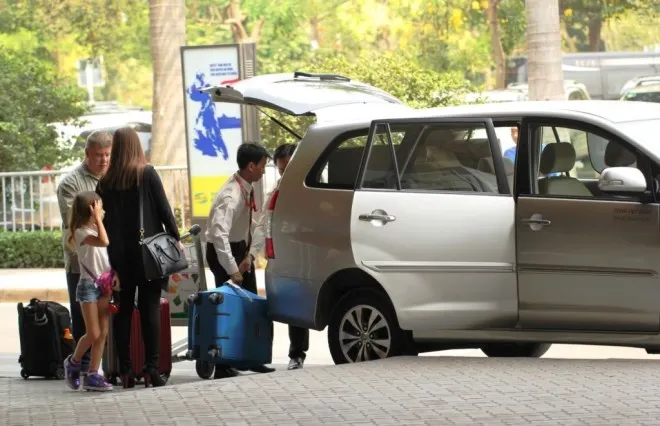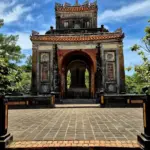Lao Bao Border Crossing: The Most Comprehensive Guide for Vietnam-Laos Overland Travelers by Ovuigo
Lao Bao Border Crossing Procedure and Requirements
Lao Bao International Border Gate stands as a vital crossing between Vietnam and Laos, situated in Quang Tri Province on Asian Highway AH16. It serves as a primary checkpoint for travelers moving between these two Southeast Asian nations, and is embedded in the wider narrative of the Indochina Peninsula’s land connections. Successfully crossing the Lao Bao border gate demands planning, proper documentation, and a clear understanding of procedures, especially for those aiming to use it as their gateway from Vietnam to Laos by land.
Step-by-Step Guide to Lao Bao Border Crossing:
- Arrival and Entry Point: Arrive at the Lao Bao Border Check Point View on Google Maps between 7:00 AM and 10:00 PM. The address is JHFR+77R, TT. Lao Bảo, Hướng Hóa, Quảng Trị.
- Prepare Required Documents: Carry your valid passport, and visa approval letter (if applicable for Vietnam or Laos), and two passport-sized photos. For Vietnamese citizens, a valid ID is necessary. ASEAN passport holders may be exempt from visa but should check recent regulations.
- Queue at Immigration: Join the queue at immigration for exit (Vietnam side) and later, for entry (Laos side). Both passport and luggage will undergo customs inspection. Expect checks for prohibited items and enforcement of currency regulations.
- Complete Immigration Forms: Obtain and fill required immigration cards or forms, which are often available at counters or from border officials. Be prepared with a pen and patience; English may not be widely spoken, so clear communication is advisable.
- Pay the Processing Fee: Expect to pay a border crossing or processing fee, which typically ranges from 2 to 5 (cash in VND, LAK, or USD). Fees may vary depending on citizenship and time of crossing.
- Customs Declarations: Declare items if carrying above the duty-free limit—liquor, tobacco, electronics—or if bringing large sums of currency beyond allowable thresholds.
- Cross to Laos: After formalities on the Vietnamese side, walk across to the Lao border post for further processing, which may include additional health checks or entry fees.
Respect local regulations: taking photos is not allowed in immigration and customs areas. Official border opening hours can vary, especially on holidays. Always verify with authorities or updated traveler reports.

Visa on Arrival at Lao Bao Border and Entry Regulations
The Lao Bao border is one of the few land gateways in Vietnam where visas can be arranged on arrival for travelers headed to Laos. The same facility is available for Vietnamese and some foreign nationals entering Vietnam, though requirements vary by nationality.
Obtaining a Laos Visa on Arrival:
- Eligibility: Most Western nationals, along with travelers from Asian countries, can obtain a Laos visa on arrival here. Check the Lao government’s latest eligible nationality list.
- Documents Needed: Valid passport (at least six months remaining), one passport-sized photo (official requirement), visa fee in USD (typically 30-45, exact fee depends on nationality).
- Process: Complete the visa application form provided at the border post. Submit required documents and fee, and receive a visa sticker on your passport valid typically for 30 days.
- Cross-References: Consult ovuigo or local travel forums for updates, especially as rules may shift.
- Vietnam Visa on Arrival: Vietnamese immigration at Lao Bao does not issue visas on arrival for most foreign nationals; an approval letter/visa is required before arrival (exceptions may apply for bilateral agreements).
Additional Entry Regulations: - Carry cash for fees as card payments are typically not accepted.
- Ensure compliance with departure regulations (stamps, exit cards).
- If overstaying a previous visa, expect fines or legal repercussions. Always settle immigration matters before crossing.
- Special note for Vietnam–Laos cross-border buses: staff often assist with paperwork, but retain and check all your documents personally.
For further consultation or custom assistance, contact our experience advisors at Whatsapp: +84868319161. We don’t run tours — we craft experiences.

Transport to and from Lao Bao Border: Routes and Options
Reaching Lao Bao Border is straightforward from several key points in Central Vietnam and Laos. The area is a main artery in overland travel, connecting Quang Tri, Dong Ha, Hue, and the city of Savannakhet in Laos.
Primary Transport Options:
- By Bus: Multiple daily buses ply the route between Dong Ha (Quang Tri’s capital) and Lao Bao town, covering 80 km in about two hours. Ticket prices are typically 80,000–120,000 VND per seat. From Hue, direct buses run to Lao Bao for 250,000–350,000 VND, with a journey time of 4–5 hours. Buses from Savannakhet (Laos) to Lao Bao are also available, usually costing 100,000–150,000 LAK.
- By Taxi/Private Car: Taxis operate between Dong Ha and Lao Bao (approx. 1,000,000–1,500,000 VND per trip). Private cars can be arranged through local agencies or ovuigo.com for a more comfortable journey.
- By Train/Air: The nearest railway station is in Dong Ha, linked from major cities like Danang and Hanoi. The closest airport for international arrivals is Dong Hoi Airport (approx. 110 km), with road transfer needed onward to Lao Bao.
Important Tips: Arrange your transport at least a day in advance, especially during public holidays. Carry copies of all essential documents. For custom vehicle entry (motorbike, car), expect additional paperwork and declarations.

Facilities and Services Near Lao Bao Border Checkpoint
Lao Bao border town is modest but offers vital facilities to support travelers.
Key Services for Travelers:
- Currency Exchange: Several exchange booths and unofficial currency changers are stationed at or near the border. Note: exchange rates may be less favorable than in major cities. Carry enough local cash for the entire process.
- Hotels: Nearest accommodation options include mid-range hotels such as Lao Bao Hotel, border guesthouses, and homestays. Room rates from 250,000–500,000 VND/night. Early booking is recommended during high season or weekends.
- Food and Supplies: Street food stalls and small markets around the checkpoint offer snacks, water, and local dishes such as pho, banh mi, and Lao noodle soups.
- Support Services: Photocopying, printing, and document services are available for a fee. Local travel agencies or ovuigo.com can assist if you need help with logistics or legal matters in Vietnamese or Lao.
- Border Market: The duty-free Lao Bao Border Market is a vibrant spot for shopping and observing local trade, open from early morning until late afternoon.
Lao Bao Border Market and Local Trade Highlights
The Lao Bao Border Market typifies the dynamic culture of border trade in Southeast Asia. As a designated special economic zone, it draws Vietnamese, Lao, and ethnic minority traders, and acts as a microcosm of the region’s commerce.
Market Character and Offerings:
- Diverse Products: Expect everything from electronics, household goods, duty-free items (cigarettes, alcohol), clothing, and imported snacks to regional specialties like Lao silk and handicrafts.
- Ethnic Diversity: The confluence of Kinh, Bru, and Lao traders imbues the marketplace with vibrant cultural flavor. Vietnamese and Lao can both be heard by the stalls.
- Trade Agreements: As part of Quang Tri’s special economic zone, businesses here benefit from reduced tariffs, fostering a robust trade environment.
- Market Atmosphere: Local festivals, border market fairs, and cross-border events are frequent, epitomizing the unique border town atmosphere in Lao Bao.
Travelers should research prices and bargain respectfully. Markets are busiest on weekends and around Vietnamese or Lao public holidays.

Lao Bao Border: Location, History, and Significance
Lao Bao border sits at a strategic juncture in Quang Tri Province, directly linking Vietnam with Laos and beyond to the Indochina Peninsula. This international checkpoint has not only functioned as a trade route for centuries but also played a part in the historic flow of people and goods between Southeast Asian countries.
Historical and Contemporary Importance:
- Geographic Location: Lao Bao is approximately 80 km west of Dong Ha along the AH16 highway, nestled between forested hills and close to the Sepon River. See its position on the map.
- Historical Role: The area has been a contested and vital link during historical conflicts, such as the Vietnam War, and today is crucial for Vietnam–Laos cross-border relations.
- Security: Border patrols and surveillance are active 24/7, with strict controls over goods and people. The border’s function as a legal, regulated crossing makes it a bedrock of Vietnam’s border security and regional integration schemes.
- Trade and Economic Impact: Since being established as an international checkpoint (1994), Lao Bao has fueled economic growth for Quang Tri Province, serving as the entry point for goods moving along the East–West Economic Corridor through Southeast Asia.
Lao Bao remains an evocative symbol of Vietnam’s openness, its historical resilience, and the dynamism of cross-border exchanges along the Indochina frontier.
For tailored advice or assistance with your Vietnam–Laos overland journey, connect with an ovuigo.com specialist via Whatsapp: +84868319161. We don’t run tours — we craft experiences. Each journey is a story written just for you, designed for those who wish to explore Vietnam slowly, deeply, and meaningfully. No fixed itineraries. No crowds. Just you — and the moments that truly matter.
Ready for your next adventure in Central Vietnam? Stay with us at The Manor Hoi An [airbnb.com.au/h/themanorhoian5beds], Hola 1 [airbnb.com.au/h/hola1a], or Hola 2 [airbnb.com.au/h/hola22] for a memorable and comfortable experience.




